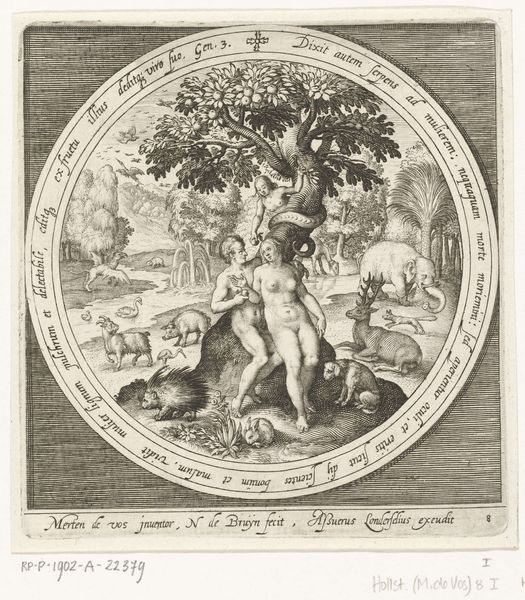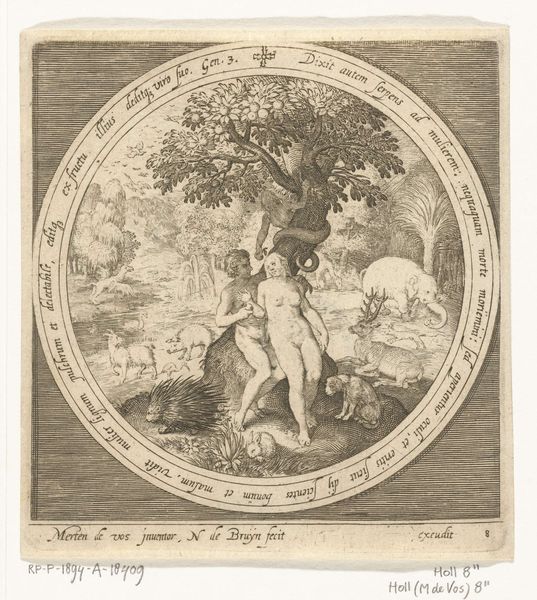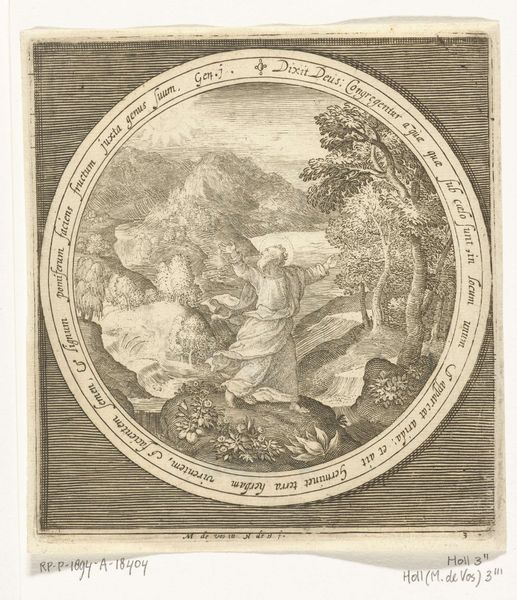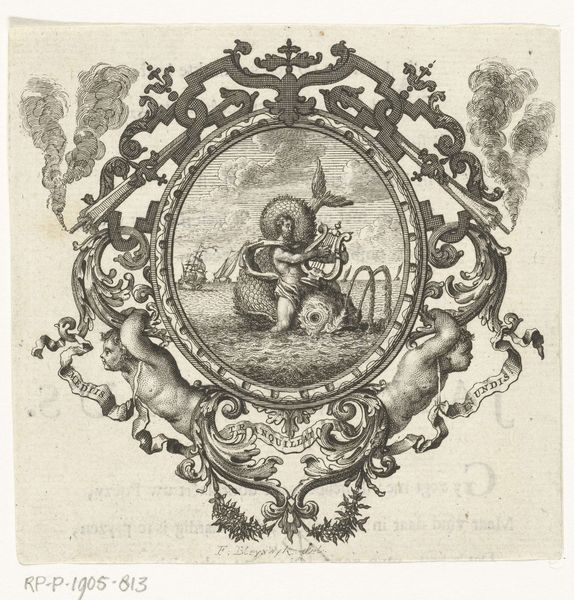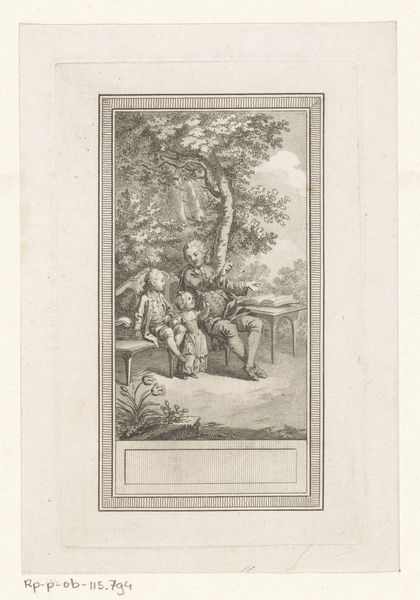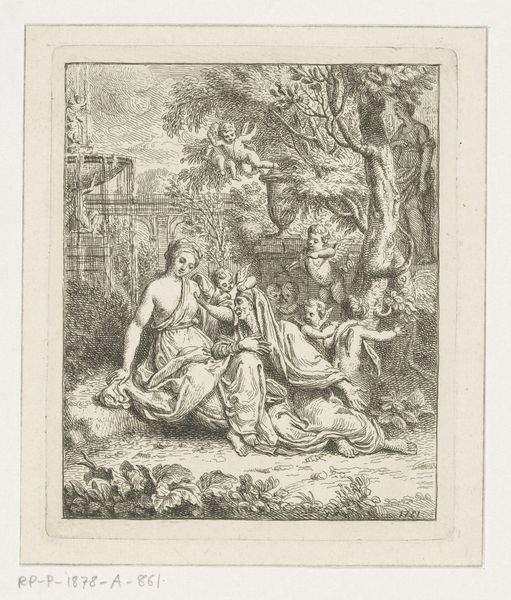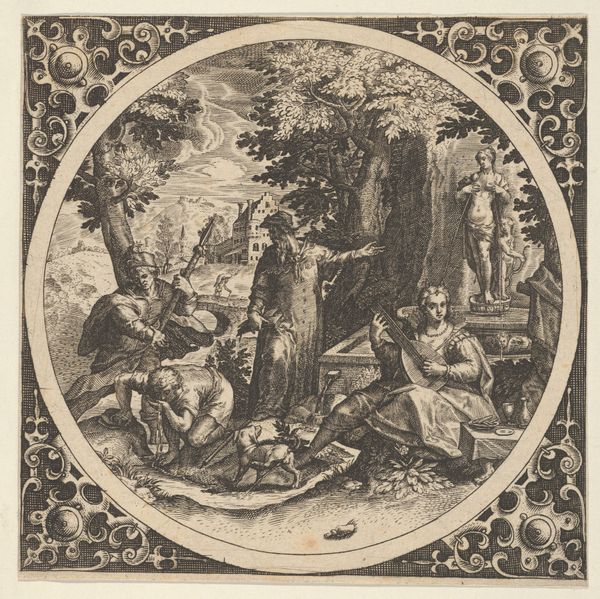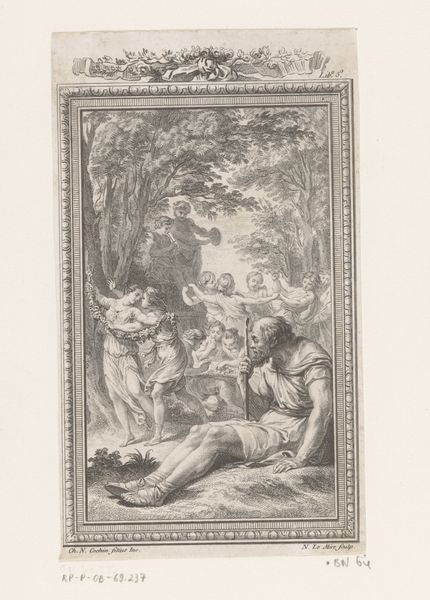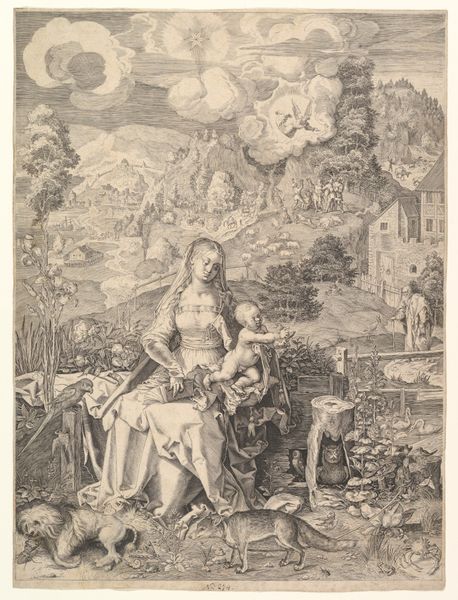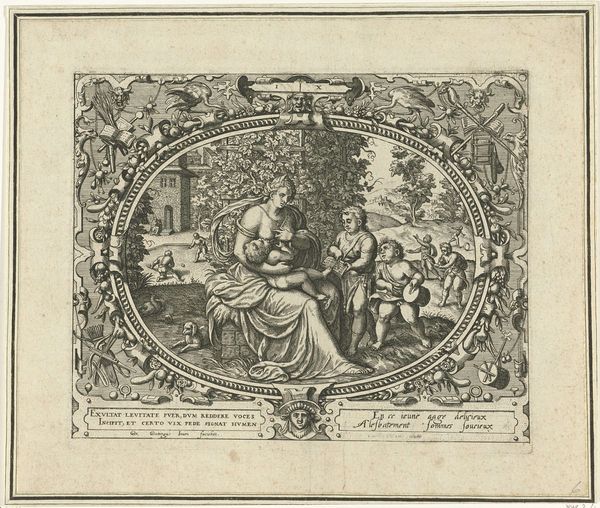
print, engraving
#
narrative-art
#
baroque
# print
#
landscape
#
figuration
#
history-painting
#
northern-renaissance
#
engraving
Dimensions: height 132 mm, width 123 mm
Copyright: Rijks Museum: Open Domain
Curator: What strikes me first is the vulnerability captured in Adam and Eve's poses—a kind of fragile innocence, like watching newborns in a petting zoo just before chaos descends. Editor: We're looking at "Adam and Eve in Paradise," an engraving created sometime between 1581 and 1656, attributed to Nicolaes de Bruyn. It depicts the biblical scene within a circular frame filled with intricate details. Notice how de Bruyn uses line and texture. Curator: It's more than just detail. I am drawn to the whole system that's around them—how their story fits within this frame and its larger relationship between humans, nature and the creator. Editor: Indeed, it’s intriguing to consider this work as a "print" which speaks to its function as a replicable medium, allowing for wide distribution of theological narratives and concepts during that period. The medium informs the message here, really. It becomes part of its significance, no? Curator: Oh absolutely! This was designed to be circulated, consumed, even contemplated. Looking at the inscription around the circle—presumably drawing from Genesis—emphasizes its educational intent. You eat, you die: knowledge has its price, you know? It is, ironically, engraved on the outside; to understand it, you need to consume this image whole! Editor: Note also the interesting visual interplay between the idyllic animals populating the foreground versus the darker, stormier landscape occupying the top left quadrant. We're definitely observing contrasts not just in subject matter, but also production values, circulation of printed matter in society at large as vehicles of communication during the early modern era. Curator: It makes you ponder the labor invested into such productions and it reminds me of thinking about how different social strata received it: maybe farmers could relate better than royalty because of constant awareness about how food sources influence existence, and it speaks of access for everyday people in ways which paintings would simply never reach. What you buy is what shapes, what dictates your destiny – even today I suspect? Editor: That's a solid, resonant note on which to leave our listeners: thinking how material culture, across time remains influential when exploring matters concerning knowledge and existence! Thank you!
Comments
No comments
Be the first to comment and join the conversation on the ultimate creative platform.

